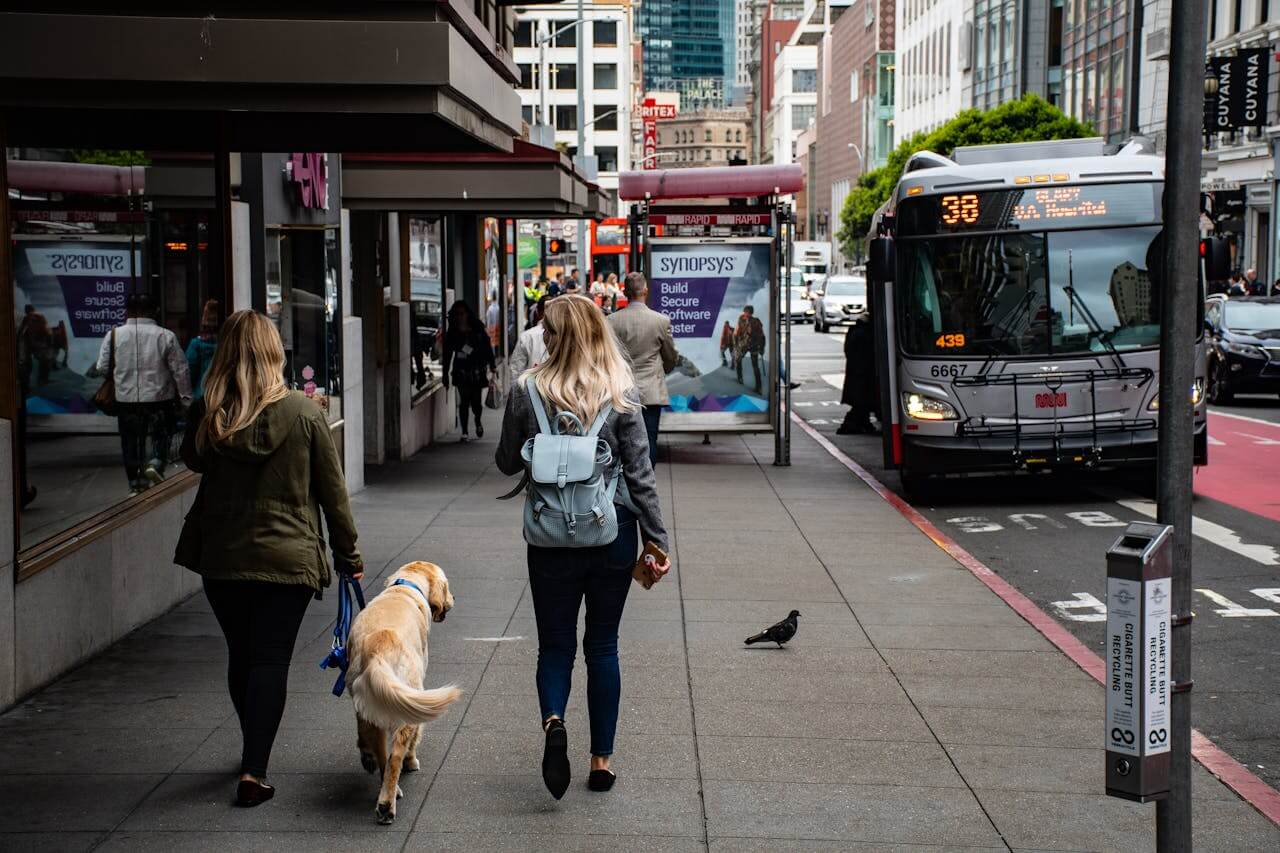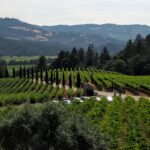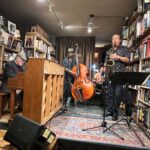Made in SF with ❤️
“Is San Francisco safe?” has unfortunately become a top question for locals in recent times. Whether it is fair or not, San Francisco has received a beating in the news across the country and even the world. However, by and large, YES. San Francisco is a safe city to visit and live in, but like any urban area, it’s important to stay aware of your surroundings, take precautions, and use common sense to stay safe.
Is San Francisco safe or is it rife with crime?
Crime in San Francisco is a topic that often sparks debate, particularly from Media portrayals that sometimes paint a picture of a city grappling with serious crime issues. In reality, while crime is a concern in certain parts of San Francisco, it’s not a pervasive issue throughout the entire city. By being aware of your surroundings and taking basic precautions, you can enjoy all that San Francisco has to offer without undue worry. The city is filled with vibrant, safe neighborhoods where residents and visitors alike can explore, dine, and enjoy the culture without constantly looking over their shoulders. As with any major city, a little common sense and caution go a long way in ensuring a safe and enjoyable experience in San Francisco.
So, is San Francisco safe or is the crime as bad as some might believe? The answer depends largely on your perspective and location. San Francisco is a city of contrasts, where experiences can vary significantly from one neighborhood to another. Some areas, like the Tenderloin, the mid-Market section of SoMA, and parts of the Mission around 16th Street, are known for higher rates of crime and may feel less safe, particularly at night. These neighborhoods often face challenges with issues such as homelessness, drug use, and street crime, which can contribute to a sense of unease for both residents and visitors.
However, it’s important to recognize that many other parts of San Francisco are relatively safe, especially compared to other major metropolitan areas in the United States. In fact, a recent article published by the SF Standard on July 13, 2024, highlighted a surprising trend: crime rates in San Francisco have actually fallen below pre-pandemic levels. This data indicates San Francisco safe as a whole and not as dangerous as some might fear.
When it comes to violent crime, San Francisco fares better than many other large cities. Incidents of violent crime, such as assaults and homicides, are relatively low compared to cities like Chicago or New York. This doesn’t mean that violent crime doesn’t occur, but it is not as prevalent as it might be in other urban centers.
On the other hand, petty crime, particularly property crimes like theft from vehicles, is a more common issue in San Francisco. Car break-ins, also known as “smash-and-grab” incidents, are notorious in the city. Thieves often target rental cars or vehicles parked in popular tourist areas, looking for valuables left in plain sight. The advice to not leave anything—literally anything—in your car is not an exaggeration. Even something as seemingly insignificant as a shopping bag or a phone charger can attract unwanted attention.
To minimize your risk of being a victim of petty crime, it’s wise to be vigilant about your belongings. Avoid leaving anything visible in your car, and try to park in well-lit, secure areas whenever possible. Many locals have adopted a mindset of “better safe than sorry” when it comes to protecting their property, and tourists would do well to follow suit.
Is San Francisco safe with the homeless?
San Francisco’s homelessness issue is noticeable and can sometimes contribute to a sense of insecurity, especially for those unfamiliar with the city. Many individuals experiencing homelessness are in vulnerable situations, and while their presence can be unsettling, they are often not a threat. It’s important to remain aware of your surroundings, keep your belongings secure, and avoid actions that might attract unwanted attention. Practicing common sense and situational awareness can help you navigate the city safely while still enjoying everything San Francisco has to offer.
Why did Nordstroms close in Union Square?
Nordstrom closed its doors in late 2023, citing concerns over crime and a noticeable decline in foot traffic. However, it’s important to note that this isn’t an isolated issue for San Francisco; many malls and shopping districts across the U.S. are facing similar challenges. The shift to remote work, combined with the rapid growth of online shopping—accelerated by the pandemic—has significantly impacted traditional retail spaces. Union Square, a key shopping area in San Francisco, has been particularly affected by these trends.
Situated near some of the city’s rougher areas, like the Tenderloin and mid-Market, Union Square saw a dramatic drop in visitors during the pandemic, leaving the once-bustling area eerily empty. The high rents demanded by landlords in this prime location likely compounded the problem, making it difficult for many businesses to sustain operations during such a challenging time.
Despite these setbacks, San Francisco is making significant efforts to revitalize its downtown core, with Union Square at the heart of these initiatives. The city has launched various downtown activations called Vacant to Vibrant in collaboration with SF New Deal and Another Planet Entertainment, including concerts and events designed to draw people back to the area and breathe new life into the streets. This revitalization effort is beginning to show promise, as several luxury boutiques are seizing the opportunity to secure prime spots in Union Square, attracted by the comparatively lower real estate prices.
While it’s true that Union Square still has a number of vacancies, there is a sense of optimism as the area starts to show signs of recovery. The square remains a central, iconic location in San Francisco, and with the city’s ongoing efforts to rejuvenate the downtown area, there is hope that it will regain its former vibrancy. As businesses adapt to the new retail landscape, Union Square seems poised to once again become a bustling hub of activity, attracting both locals and tourists alike.
- Should I be worried about earthquakes or other natural disasters? Another thing that you may not have considered when wondering “is San Francisco safe” is natural disasters. San Francisco has experienced some really bad earthquakes in its history. However, the city has tried to learn from this by requiring seismic retrofits and other regulations. You can review liquefaction maps in the case of a big earthquake and 100 year flood maps. The hilly terrain can make driving, walking, and biking challenging but not insurmountable.
Visiting or Moving San Francisco
Should you visit San Francisco? Absolutely! As someone who loves this city, I want everyone to have a fantastic experience here. San Francisco has so much to offer, from its iconic landmarks to its unique neighborhoods, and I’ve put together a 3 day itinerary that I’ve shared with many friends and family members. It’s designed to give you a well-rounded taste of the city and can be easily customized to suit your interests.
Renting a Car
However, I must offer a word of caution regarding transportation. If you’re planning to visit, I strongly recommend reconsidering whether you need to rent a car or drive a vehicle with out-of-town plates in the city. Car break-ins, unfortunately, are a common issue in San Francisco, especially for vehicles that are parked on the street. If you do choose to rent a car, it’s a good idea to park it in a secured garage where it’s less likely to be targeted. Another option is to park your car outside the city at a BART or Caltrain station and use public transit to get around San Francisco—our public transportation system is convenient and can take you to most major attractions without the hassle of driving.
If you absolutely need to keep items in your car, be sure to place them in the trunk or keep them with you. Avoid leaving anything visible inside the car, as even seemingly insignificant items can attract unwanted attention. It’s important to take these precautions seriously, but please don’t let concerns about petty crime detract from your trip. With a bit of planning and awareness, you can enjoy everything this incredible city has to offer without worry. San Francisco is a vibrant, exciting place to explore, and with the right approach, you’ll have a wonderful and memorable visit.
Taking Public Transit
San Francisco’s primary public transportation system, the MUNI, offers a comprehensive network that includes buses, subway/tram services, and the iconic cable cars. It’s an efficient way to navigate the city, with routes that can take you almost anywhere you need to go. In addition to MUNI, the Bay Area Rapid Transit (BART) and Caltrain systems provide convenient connections from surrounding areas into San Francisco, making it easy to travel between the city and the broader Bay Area.
Personally, I’ve had consistently positive experiences using MUNI, Caltrain, and BART to get around. They’re generally reliable and a great way to avoid the hassles of driving in the city. However, like any urban environment, it’s important to stay alert while using public transportation. I always recommend keeping an eye on your belongings and being mindful of your surroundings, particularly in certain areas. Stations like Civic Center, 16th and Mission, and 4th and King can be busier and more chaotic, so a little extra caution is advised.
While I find BART to be a convenient option during the day, I do prefer to avoid taking it at night, especially if I’m traveling alone. This is purely a personal preference, but it’s something to consider if you’re planning to be out late.
Should you move to San Francisco?
Considering a move to San Francisco? It’s an exciting city, but here are some key points to consider:
Pros of moving to San Francisco
- Vibrant Culture: Diverse arts, world-class dining, and lively festivals.
- Job Opportunities: A tech and innovation hub with plenty of career options.
- Beautiful Scenery: Stunning views and proximity to great outdoor getaways.
- Mild Climate: Cool, comfortable weather year-round with few bugs.
- Public Transit: Extensive system, making it easy to get around without a car.
Cons of moving to San Francisco
- High Cost of Living: Expensive housing and daily expenses.
- Housing Shortage: Limited affordable options.
- Traffic & Congestion: Commutes can be a hassle.
- Homelessness & Crime: Visible homelessness and some petty crime, so stay cautious.
- Natural Disasters: Earthquake risk and wildfire smoke during fire season.
Politics
San Francisco is largely liberal, which may be a factor if you hold conservative views.
Ultimately, San Francisco is vibrant but costly, with some challenges. If you can, visit first to explore. I’ve loved living here for 8 years, but it’s not for everyone. If you decide to move, welcome! I have resources here to help you get started.





